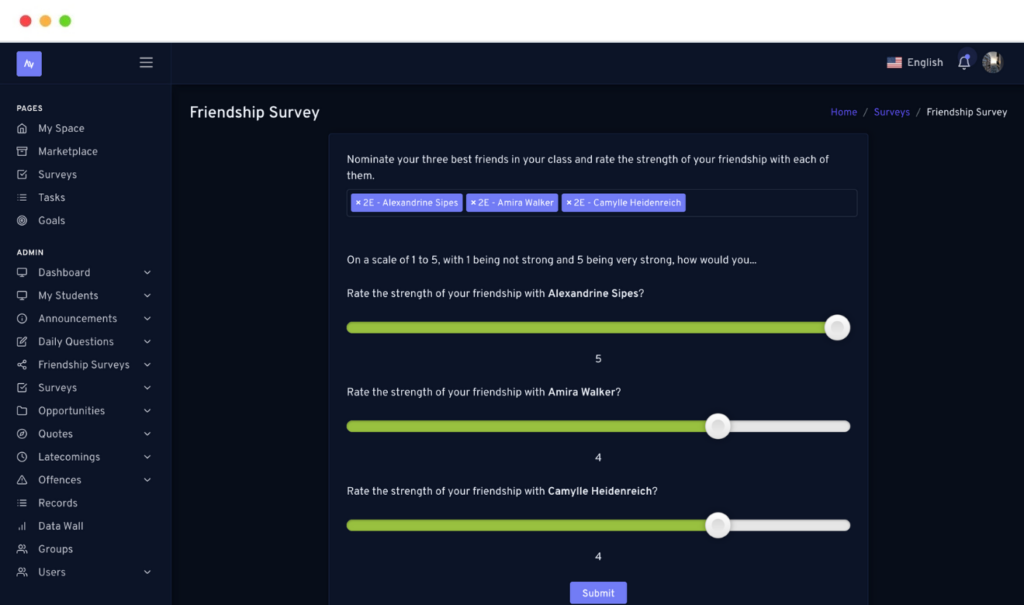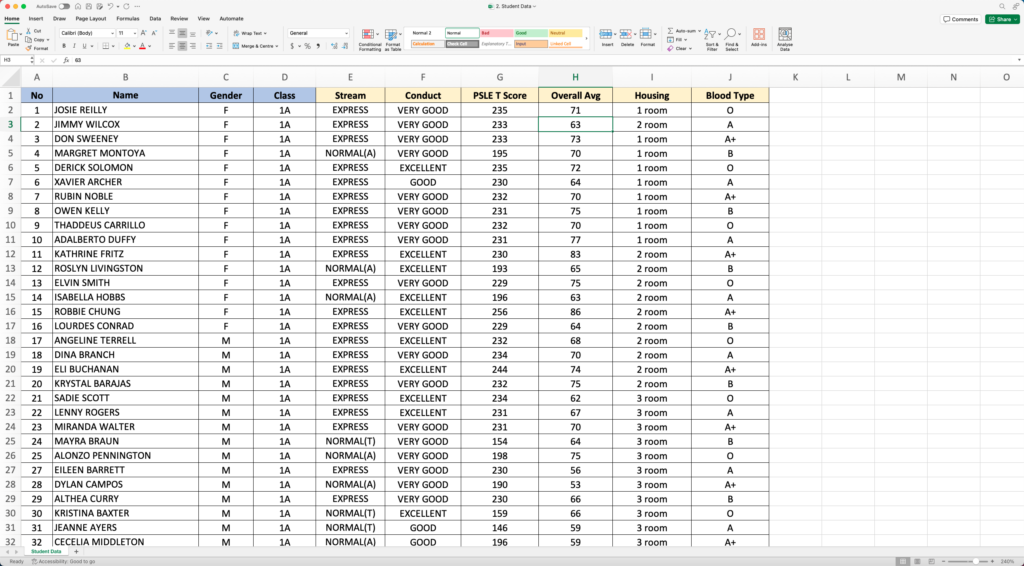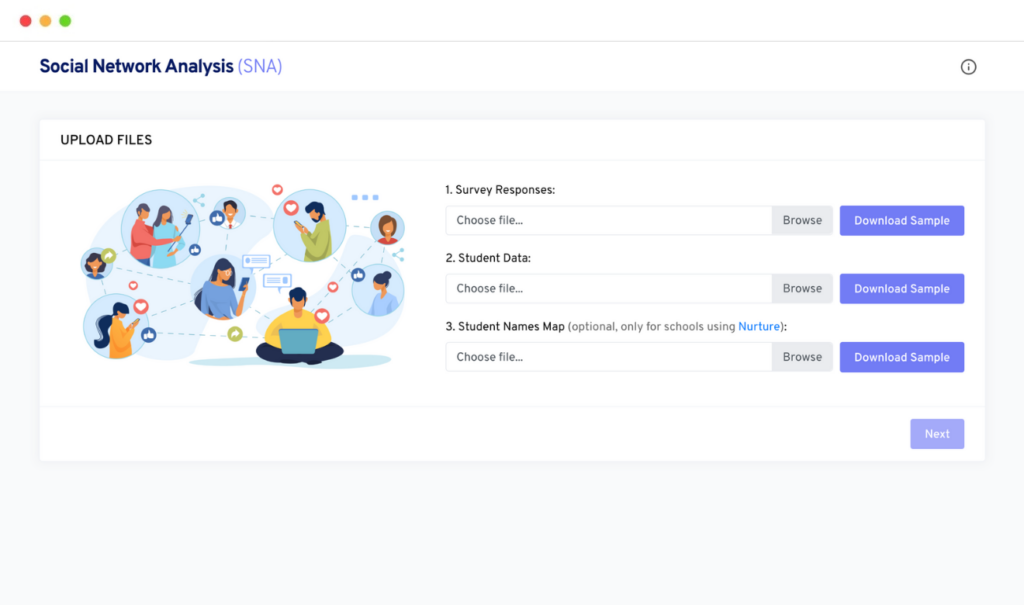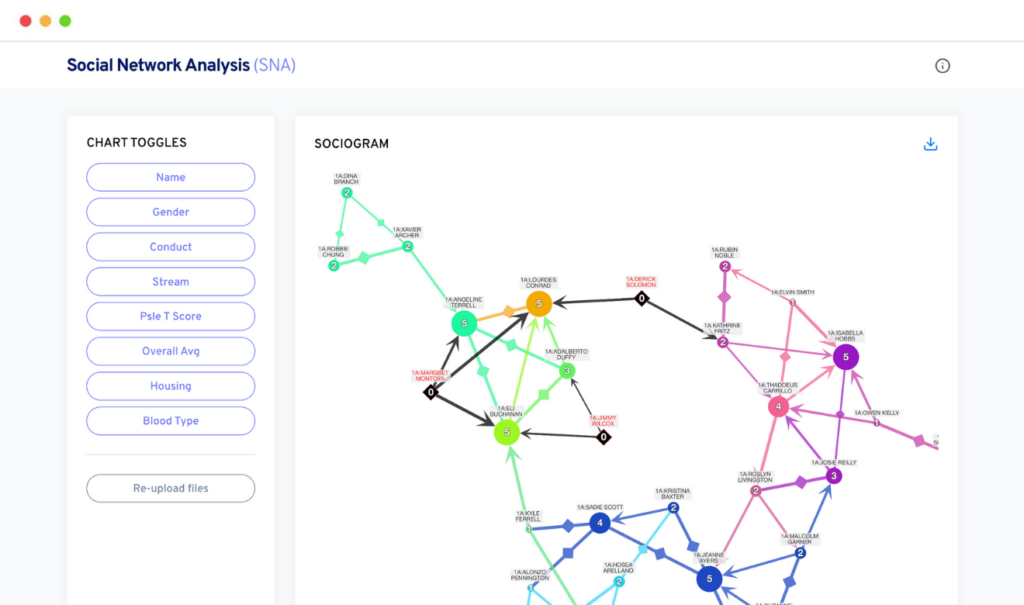How to Use Sociomap: A Step-by-Step Guide for Teachers

Social Network Analysis (SNA) is becoming an essential tool for educators looking to foster a positive classroom environment and understand student interactions. Sociomap by Dive Analytics is an easy-to-use, data-driven platform designed to help teachers navigate the complexities of student social dynamics. Here’s how you can leverage this powerful tool to create a more supportive and inclusive classroom.
Step-by-Step Guide to Using Sociomap
Step 1: Create an Account
First, head to Sociomap’s website and download our Sociomap tool for free on your windows desktop.
Step 2: Run a Friendship Survey
Thereafter, you’ll need to run a friendship survey to gather insights into student relationships. This can be customised with questions like, “Who are your three closest friends?” or “Who do you often collaborate with in class?” With different questions, you would be able to garner different insights into your students’ friendship ties. If your school is already using Nurture you may create and run the friendship survey directly to your students. Otherwise, you are also welcome to use familiar survey tools like Google Forms or SurveyMonkey and simply download and fit the survey responses into our Excel templates.

Step 3: Prepare Student Data Using Excel Templates
After you are done collecting your survey data, fit it into our excel templates which can be downloaded from our Sociomap desktop app. In addition to survey data, Sociomap allows you to explore further by mapping student attributes like gender, conduct grades, and more. This enables you to uncover deeper insights, such as interaction patterns between boys and girls or the formation of cliques among students with lower conduct grades.

Step 4: Upload Student Data
Upload your Survey Responses and Student Data Excel files into Sociomap to generate interactive sociograms and key metrics, such as centrality measures. Sociomap automatically generates a visual representation of your classroom’s social network.

Step 5: Visualise the Sociogram
With the visual network at your disposal, dive deeper into your classroom’s social dynamics. Identify cliques, isolated students, and central figures who influence the class. Sociomap also provides you with centrality metrics to paint a detailed picture.

Step 6: Take Action
Sociomap doesn’t just provide insights; it empowers you to take action. Based on the SNA results, you can adjust seating arrangements, re-organise group projects, and provide targeted support for isolated students. You can also share these insights with your school counsellors or parents to address any social or emotional concerns.
Step 7: Monitor and Adjust
The classroom environment is constantly evolving, and so should your interventions. Run the SNA survey periodically throughout the school year to track changes and assess whether your actions are having the desired impact.
Benefits of Using Sociomap for Teachers
Sociomap is much more than just a tool to visualise social relationships; it provides multiple advantages that can transform classroom management and enhance student well-being.
- Early Detection of Social Issues
Sociomap’s visual representation of friendships helps teachers quickly identify students who might be isolated or at risk of social exclusion. This early detection allows for timely intervention, helping to prevent long-term issues like bullying or disengagement. - Improved Group Dynamics
By understanding the social ties within the classroom, teachers can create better group dynamics for projects and activities. This reduces friction during collaboration and ensures that every student is included. - Data-Driven Decision Making
Instead of relying on intuition or incomplete information, teachers can make informed, data-backed decisions about classroom management. Sociomap offers a clear picture of student interactions, helping you create a more harmonious learning environment. - Tailored Support for Individual Students
Sociomap helps teachers go beyond the surface level of student behaviour. It enables personalised support for students who may be struggling socially, emotionally, or academically by identifying who they are most or least connected to. - Strengthened Teacher-Student Relationships
By having a deeper understanding of the classroom’s social fabric, teachers can build stronger, more trusting relationships with students. Sociomap allows educators to address specific needs, improving both academic and social outcomes. - Fosters a Positive School Culture
Using Sociomap helps promote a supportive and inclusive environment. It encourages students to form healthy friendships and social ties, contributing to an overall positive school culture where everyone feels like they belong. - Support for Well-being Initiatives
Sociomap aligns with broader mental health and well-being programs in schools. It provides valuable insights into peer support systems and can complement well-being check-ins, ensuring that no student is overlooked.
Final Thoughts
In conclusion, Sociomap is a vital tool for today’s educators, empowering them to understand and improve the social dynamics within their classrooms. Whether it’s detecting isolated students, optimising group activities, or fostering a supportive environment, Sociomap gives teachers the insights they need to ensure the success and well-being of every student.
With easy setup and a powerful data-driven approach, Sociomap is the future of classroom management and student support.



